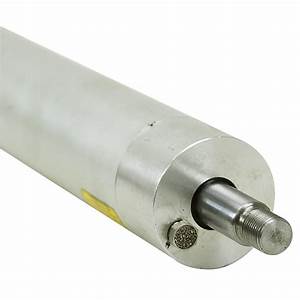A cylinder is a three dimensional solid one of the most basic of curvilinear geometric shapes. It is the idealized version of a solid physical tin can having lids on top and bottom. Geometrically it can be considered as a prism with a circle as its base. The shift in the basic meaning (solid versus surface) has created some ambiguity with terminology. It is generally hoped that context makes the meaning clear. Both points of view are typically presented and distinguished by referring to solid cylinders and cylindrical surfaces, but in the literature the unadorned term cylinder could refer to either of these or to an even more specialized object, the right circular cylinder.
A cylindrical surface is a surface consisting of all the points on all the lines which are parallel o a given line and which pass through a fixed plane curve n a plane not parallel to the given line. Any line in this family of parallel lines is called an element of the cylindrical surface. From a kinetic point of view, given a plane curve, called the directrix, a cylindrical surface is that surface traced out by a line, called the generatrix, not in the plane of the directrix, moving parallel to itself and always passing through the directrix. Any particular position of the generatrix is an element of the cylindrical surface.
The bare term cylinder often refers to a solid cylinder with circular ends perpendicular to the axis, that is, a right circular cylinder, as shown in the figure. The cylindrical surface without the ends is called an open cylinder. The formulae for the surface area and volume of a right circular cylinder have been known from early antiquity.
Double acting cylinder is a cylinder in which the working fluid acts alternately on both sides of the piston. In order to connect the piston in a double-acting cylinder to an external mechanism, such as a crank shaft a hole must be provided in one end of the cylinder for the piston rod, and this is fitted with a gland to prevent escape of the working fluid. Double-acting cylinders are common in steam engines but unusual in other engine types. Many hydraulic and pneumatic cylinders use them where it is needed to produce a force in both directions. A double-acting hydraulic cylinder has a port at each end, supplied with hydraulic fluid for both the retraction and extension of the piston. A double-acting cylinder is used where an external force is not available to retract the piston or it can be used where high force is required in both directions of travel.
If we can assist you with repairs, seals or getting you a new one give us a call at 662-871-8403
